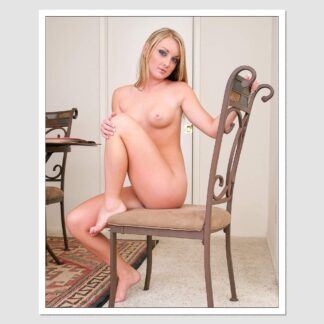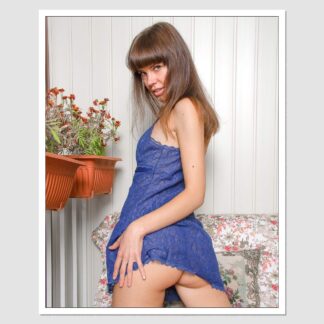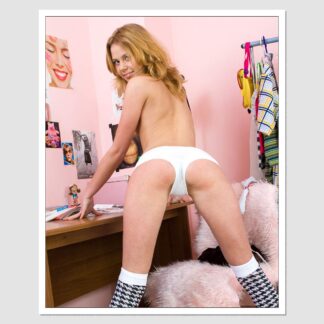
Adriana Sklenarikova
Adriana Sklenarikova is a writer, activist and organizer based in New York City. She is a staff writer at Feministing, the founder of the NYC-based group Shikihati, and the organizer of the annual Intersectional Feminist Art Exhibition (IFAE).
Feminism
Feminism, as an identity, grew out of the suffragette movement in the early twentieth century, and it wasn’t until the 1970s that gender equality would become a central tenet of the feminist movement. Even now, gender equality is sometimes seen as mutually exclusive to feminism, but in reality, they are closely related and should be seen as alternatives for women seeking to empower themselves.
One of the most prominent voices in the U.S. advocating for gender equality is NOW Legal Defense and Education Fund (NOW LEAF) president Alexandra Karteronakis. “Feminism is about women having the power to define their own destiny, and that is incredibly important when you consider that women are still not considered equal under the law in this country,” she said in a recent interview. “So, what does that mean? That means that even when they are doing the same thing as men, they are not necessarily getting the same chances. They are not necessarily being paid the same amount. So, it is important that women know that they have a choice, and that they can be both feminist and equal under the law.”
Queerness
The queer community has historically been associated with sex, gender and sexual orientation. The queer rights movement emerged in the early 1970s as a reaction to the backlash that followed the liberalization of laws pertaining to sexual behavior in the 1960s. While it is important to recognize that not all feminists are queer nor vice versa, many self-identified feminist authors, speakers and artists are members of the LGBTQ community, including Kate Clinton, Cheryl Dunye and Audre Lorde.
In recent years, the LGBTQ community has become more unified in its political activism and identity. As part of this process, many members have come to see feminism and queer rights as inherently compatible. The 2014 election of the first openly LGBTQ Speaker of the House, Nancy Pelosi, is a perfect example of this convergence.
In a 2018 interview, the influential LGBTQ rights activist Harry Belafonte stated, “I don’t see any contradiction between being a good feminist and being a good gay rights activist. I mean, as far as I’m concerned, being gay is being human and being human is being feminist.”
Art
Feminists have long been involved with the visual arts, and the feminist art movement emerged as a way to bring art forms that traditionally were associated with men, such as painting and sculpture, into the sphere of activity for women. Many early feminists, such as the poet and editor Charlotte Perkins Gilman, were avid art collectors and engaged in what now would be considered high-end interior decoration. In the early twentieth century, it wasn’t uncommon for women to run their own galleries and museums, and they often purchased artwork to hang on the wall of their home or office. Since the 1970s, however, the feminist art scene has largely functioned as a means of self-expression, a way to give voice to feminist concerns and ideas, and a form of political activism.
The feminist artist collective, Kitchen Table Workshop, creates murals for public spaces and provides outreach services to communities in New York City. Participants in their workshop create portraits of prominent women, which are then printed on canvas and attached to wooden boards. Each board is labeled with the name of a woman it represents, and groups of boards are hung on the wall to form a portrait gallery. In a 2018 interview at Feministing, the collective’s cofounder, Sara Marcus, said, “Even when we had our first showing [in 2002] in a New York gallery, we weren’t just showing our work. We were also doing workshops, and those workshops sort of helped to establish what we do today.” These days, Kitchen Table Workshop is even more focused on providing tools and resources for marginalized women and girls to create positive social change through art.
Social Change
There is a direct connection between art and social change. Many artists become involved in social activism during the course of their creative process, and some, like Mark Twain, even see their work as a form of political commentary. The Belgian artist, Henry Van Cleef, created a piece of interactive art in the shape of a clenched fist, which he called “Fist in the Pocket,” in order to raise awareness about the mass incarceration of black Americans in the United States. He chose that particular art form because it is an easy way to get the attention of passersby and make them stop and take notice.
In 1866, the English artist and designer Florence Nightingale started the design movement called “designing for social change,” which encourages designers to use their talents to improve society. In particular, Nightingale wanted designers to be involved in the process of improving educational opportunities for women and girls, and she established the design school she attended in London with this in mind. Nowadays, many well-known fashion designers, such as Stella McCartney and Mihara Yasuoka, have a special collection of dresses, blazers or shoes that they contribute to projects designed to empower women and girls.
Political Candor
Many feminists are well-versed in politics and tend to hold strong opinions about most issues. When asked about her feelings on Donald Trump, the U.S. president who has bragged about sexual assault and who is now facing a number of allegations, feminist author and speaker Angela Nagle had this to say:
“I think he’s an embarrassment to American politics and to the office of the presidency. But I’m also aware that many people feel differently,” she said in an interview. “I respect that, and I’m not going to take any side in this one. It’s not an either-or thing; it is what it is.”
Nagle points out that while many people inside and outside of the feminist community are disturbed by Trump’s behavior, it is imperative to maintain a certain political candor in the face of oppression.
How Do I Identify As A Feminist?
If you’re interested in identifying as a feminist, here are some handy tips:
– Look to history. Feminism is based on the principle that women should have equal rights as men. This implies that girls should have access to the same education and employment opportunities as boys, and that women and men should have the same political power. This is not a recent development; it can be traced back to the suffragette movement in the early twentieth century.
– Be willing to learn. With every generation, feminism expands its scope and influence. Today, the feminist movement is strong in almost every country around the world, and it has created an environment in which women are no longer willing to be silent about injustices. If you’re a feminist, be willing to learn and be a part of the ever-growing movement.
– Be vocal. One of the best ways to identify as a feminist is to speak out about your beliefs. If you don’t feel comfortable speaking in front of large groups, volunteer for feminist campaigns or join a feminist support group. The more vocal you are about being a feminist, the more you will stand out among others who identify as such. Make no mistake: you are not alone in your beliefs, but being vocal about them will certainly get you noticed.
– Do your research. It is important to have an idea of what feminism is and what it isn’t. Make sure you are familiar with the different types of oppression that women face, such as racism, classism and ableism, and don’t be afraid to ask questions if you aren’t sure about something. Do your research, and don’t just believe what you hear. Instead, look for evidence to support your position.
– Look to the future. While the twenty-first century has brought with it many gains for women, there is still much work to be done. In the developed world, gender equality is often considered a given, but in many third world countries, it is the exception rather than the rule. Feminism is about creating a world in which women are no longer oppressed, and that means we still have a lot of work to do. If you want to be considered a true feminist, continue to advocate for equal rights and opportunities for women and girls.






